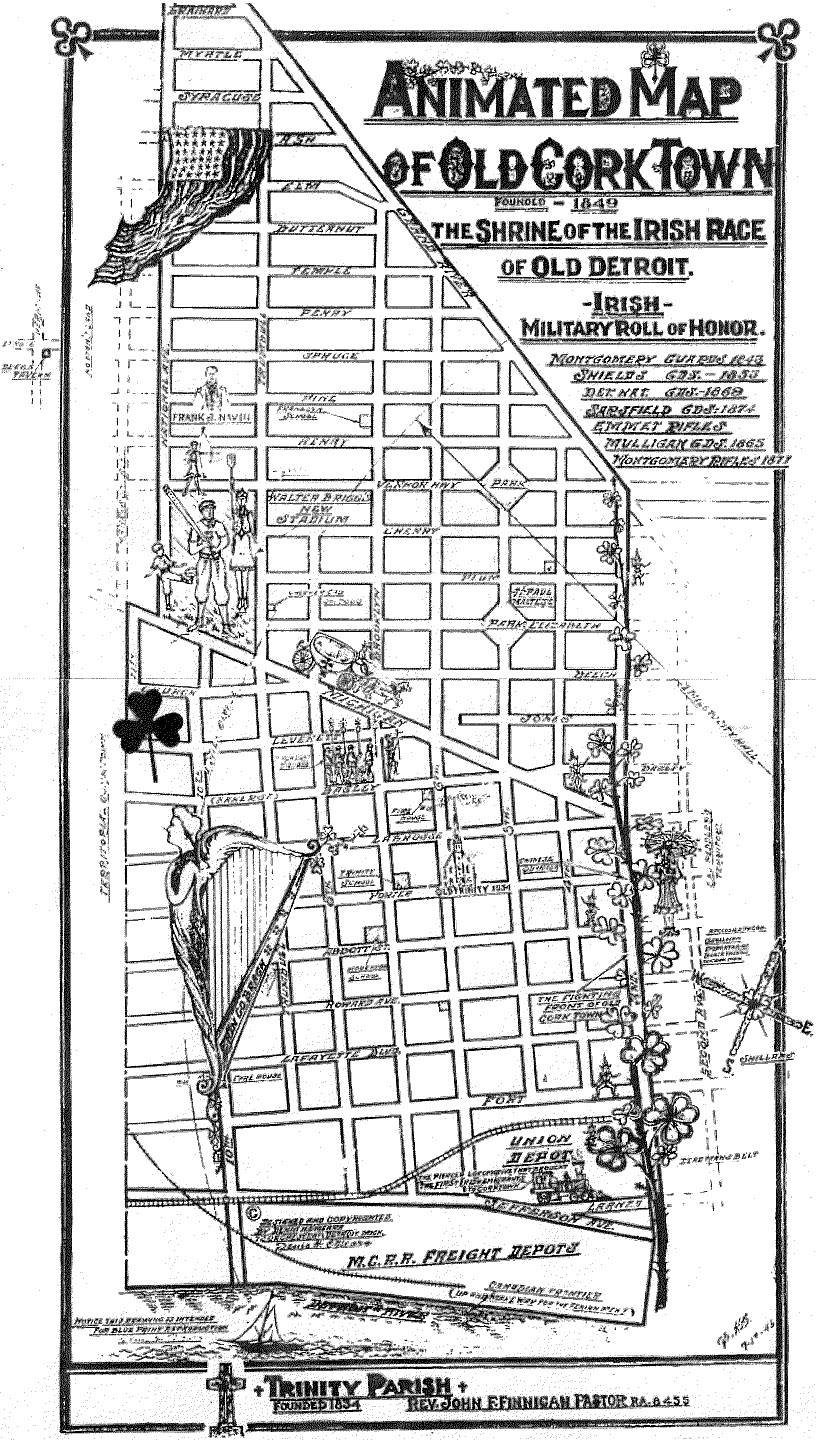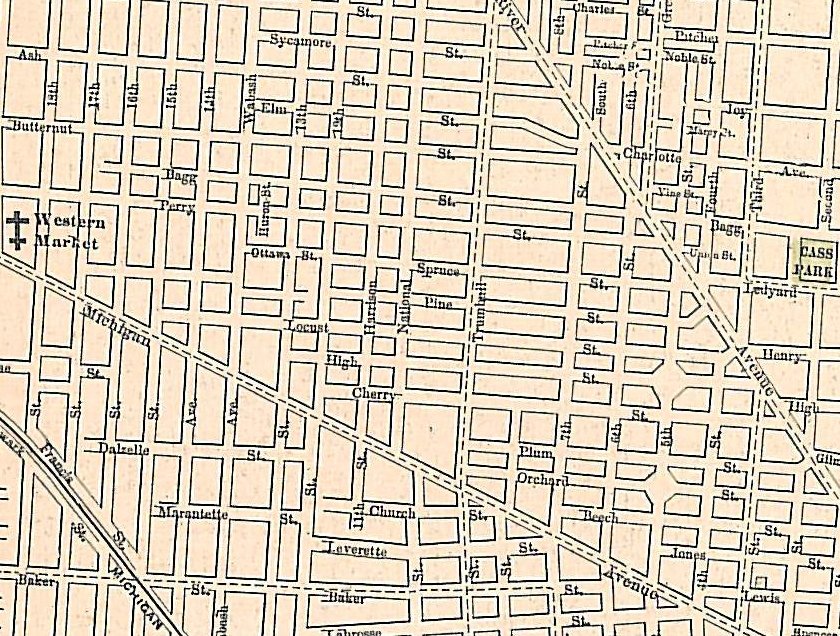
North Corktown History
Learn more about Detroit’s best neighborhood
North Corktown is a part of the original borders of Corktown, which existed as north as Martin Luther King Blvd (formerly named Myrtle Rd) and as west as Cochrane St. (formerly named National Ave). The original year the neighborhood was established is still debated despite the the street signs which state 1834 as the year. Around that year, and the next couple decades during the Great Famine in Ireland, is when Detroit experienced a significant growth in the Irish community. Corktown was named after where a large portion of the Irish immigrants were from - County Cork.
In the middle of the 20th Century, I-75 was constructed right through the middle of Corktown, dividing it almost in two halves, North and South. The Corktown area north of the highway began to be known as Briggs - which was the name of Old Tiger Stadium at the time until 1960. The name Briggs stuck with the neighborhood despite the stadium becoming Tiger Stadium. "North Corktown" is a term used more recently to bring the identity back to its historic roots. However, talking to residents that have lived here their whole lives, sometimes for several generations, they still know their neighborhood simply as Corktown.
North Corktown still has several buildings from the early 1900s and even before. Even with many of them being torn down, you can feel the original layout of the neighborhood - with buildings that would have a business on the ground floor with residence on top on almost every corner. The neighborhood was self-sustainable with grocery stores, drug stores, confectionary shops, and saloons just blocks away for the residents, as well as Western Market not too much farther down the road.

In the early 2000s, a group came together and formed the Greater Corktown Development Corporation. They built several new homes on the vacant land that had the same look and feel as the original neighborhood - a traditional style and a variety of different layouts and color schemes. While many houses were successfully built, the GCDC unfortunately did not survive the Financial Crisis. Currently, many of the vacant lots are undergoing a transfer of ownership with many development companies and the city showing significant interest in the neighborhood. At the same time, several community members and organizations have stepped up their investment in the neighborhood by activating vacant lots into public parks and urban gardens.
Help us tell the Story of North Corktown.
Are you a longtime resident or history buff? Do you have photos of North Corktown through the years or stories of the neighborhood?
We are looking to compile an in-depth historical record of the residents, businesses, and activities of the neighborhood.

